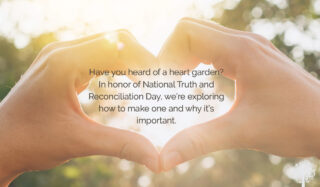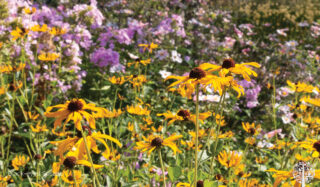Planting A Heart Garden For Truth And Reconciliation
The National Day for Truth and Reconciliation occurs annually in Canada on September 30th. It’s a day to remember the children who never returned from the residential school system, their families, and their communities. Commemorative events are held nationwide, including Orange Shirt Day; people can also participate in ongoing reconciliation efforts by planning to grow a heart garden.


What is a Heart Garden?
In June 2024, the Canadian government launched the Honouring Memories, Planting Dreams heart garden at Rideau Hall. This garden remembers First Nations, Inuit, and Métis children who were in the residential school system – the survivors as well as those who never came home.
Canada’s Governor General Mary Simon worked with schoolchildren to make hearts with written messages. They glued the hearts onto sticks and planted them in a garden.
Each heart represents our responsibility to remember the Indigenous children’s stories and acknowledge their pain, strength, and courage. Throughout the summer, visitors to Rideau Hall were encouraged to add more hearts to the garden.
The garden at Rideau Hall is in a public outdoor space, but heart gardens can be grown in yards everywhere or indoors. Anyone can participate!
Getting Started
The first step to creating a heart garden is to learn about residential schools and their devastating impacts and understand the definition of reconciliation.
How To Create A Heart Garden
- Next, decorate a paper heart and honor the children who attended residential schools with written messages. Use the heart template at the bottom of this Honouring Memories, Planting Dreams PDF.
- Cut out the heart, but leave it joined at the top so you can fold both sides together to make it two-sided.
- Glue a stick to the inside of the heart and fold the other side over to seal it closed.
- Plant the stick in your garden soil or flower pot.


What To Plant In A Heart Garden
The First Nations Child & Family Caring Society suggests planting native species that bloom throughout the seasons and support pollinators and wildlife.
Consider a native wildflower mix or tall grasses local to your region. For example:
- Black-eyed Susans
- Butterfly Milkweed
- Foxglove
- Wild Aster
- Fowl Bluegrass
- Yello Prairie Grass
- Wild Bergamot
- Bee Balm
- Little Bluestem
- Shasta daisy
Maintaining A Heart Garden
Don’t bother deadheading plants or removing garden debris in the fall. Insects and other wildlife will use the stems and leaves for shelter over the winter, and birds will nibble at the seedheads when food is more scarce. Fallen plant debris will eventually decompose and nourish the soil.
Spread The Word!
Planting a heart garden is a meaningful way to acknowledge mistakes from our past, remember the victims of the residential school system, and grow together as a society. Register your garden at honouringmemoriesplantingdreams.ca and share photos of what you’ve planted on social media with the hashtag #TRCHeartGardens.




